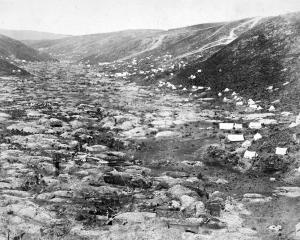Fourteen South-East Marine Protection Forum members represent stakeholder views ranging from the environment and iwi to tourism and commercial fisheries. Here, a variety of forum members outline their views and goals.
• Related story: Saving our seas
The southeast coast holds significant cultural and historical value for Kai Tahu, an ancestral landscape, immortalised in creation stories, rich in tradition and bountiful provider of kaimoana.
As kaitiaki (guardians), Kai Tahu have a duty to maintain and protect their customary interests.
It is imperative we are engaged in any discussion about future marine protection in the coastal area.
We recognise that many communities of interest have a stake in the southeast coast, and the need for appropriate balance of protection and use of our marine habitat and resources.
Prior informed agreement by our flax roots to any proposed change is our standard.
Tourism is an important sector of our southern economy.
The varied landscapes of the coast are significant attractions.
Wildlife tourism is worth over $100 million annually to the local community.
Sea lions, seabirds, wading birds, dolphins, whales and penguins are the assets.
Each rare yellow-eyed penguin on the mainland is worth many thousands of dollars a year.
The integrity of tourism demands that we value the marine environment and show a commitment to protecting it through a network of marine protected areas.
At this stage, I believe that the forum members have the knowledge and the will to achieve this.
People value coastal waters and beaches for many reasons other than extractive ones: scenery, recreation, naturalness, wildness and a heightened sensory experience, including the sound, smell and feel of the land's edge.
They may choose to swim, sunbathe, boat, beachcomb.
They expect the beach to be clean, the water uncontaminated.
MPAs are value-enhanced if they have good access by road or walkways and offer opportunities for people to snorkel in biodiverse waters, explore rock pools and become educated in the ways of the sea.
MPAs and marine reserves cultivate curiosity and excite fascination in the often mysterious marine world.
As active users of the marine environment, the stakeholders I represent appreciate the value and necessity of marine conservation.
The how and where, however, is very much in dispute.
We believe in conservation through management rather than selective areas locked away for "posterity''.
The economic activity generated through recreational fishing is huge and the socio-economic benefits no less so.
We recognise the aspirations and perceptions of other stakeholders and potential users, but believe all concerns and aspirations can be met through a regime of informed management.
Via the South-East Marine Protection Forum, our Government intends to implement a network of marine protected areas in our region, regardless of the prevailing negative sentiment of recreational fishers.
Without constructive input from recreational fishers, the SEMPF process may result in unnecessary impairment of the ability to catch a feed.
Recreational fishers need to work with the SEMPF in order that MPAs avoid recreational fishing hot spots.
Recreational fishers should also be identifying and promoting MPA sites where protection from commercial bottom-impacting fishing methods is required but where recreational line fishing would remain permissible.
My sector groups value a healthy functioning ecosystem and the maintenance of biological diversity.
Out of the forum process they would like to see marine protected areas aimed at protecting key species, for example, yellow-eyed penguins, little blue penguins and marine mammals.
Not only is it important to protect such species from direct impacts, such as being caught in fishing nets, but also to protect the marine environment on which these species depend.
They see MPAs as an important tool to improve the resilience of top predatory species to other threats, for example global climate change.
New Zealand's seafood industry plays a key role in the country's economy, contributing about 1.63 billion in export dollars and employing more than 20,000 people.
The commercial fisheries in the Otago and Southland regions support a number of locally based fishers using fishing methods that target crayfish, paua, and various shellfish and fin-fish species.
Catch is landed for local fish shops, wider national consumption as well as export to worldwide markets.
Preserving the integrity of the marine environment goes hand in hand with maintaining healthy productive fisheries and these are managed and monitored closely by the commercial fishing industry and the Ministry for Primary Industries.












